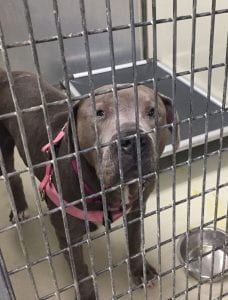It’s impossible to miss the news stories about a severe canine respiratory disease circulating amongst dog parks and day cares in many parts of the U.S. right now. At the moment, an infectious agent has not been identified, but it seems likely to be a virus. Reported clinical signs include a rare but severe pneumonia, a prolonged cough with or without sneezing and runny eyes, and a lack of response to antibiotics. It is much less clear that a brand new pathogen is indeed responsible for increased cases, but it could be. It is also not clear which coughing dogs are affected by the new pathogen and which might just have one of the usual suspects, now under closer scrutiny.1

In shelters, circulating respiratory disease of unidentified cause is pretty common. We know of many viruses that cause upper respiratory diseases in dogs and we have effective vaccines for only a few of them. Regardless of the cause, isolating coughing dogs away from incoming and general populations, controlling fomites and aerosol spread, monitoring sick dogs closely, providing nutritional, fluid and nursing support, and starting dogs on doxycyline when needed are the mainstays for keeping our canine populations healthy. We have learned some things when managing identified and unidentified respiratory diseases over the years: 1) Outbreak control measures work; 2) Intranasal respiratory disease vaccines (esp. the trivalent) protect much more effectively than subcutaneous products (except Distemper), and may help even for unrelated respiratory diseases; 3) Mycoplasma (which some dogs with this new respiratory disease have tested positive for) is responsible for many cases of secondary bacterial pneumonia when battling primary upper respiratory viruses; 4) not all PCR panels are equally effective in detecting respiratory pathogens2; and 5) crowding of dogs leads to increased transmission, increased length of stay, and going over capacity for care.3
Ever since we got out of the COVID-19 pandemic, according to Shelter Animals Count,4 there has been a noticeable increase in canine intake into shelters and lengths of stay for those dogs. This is in spite of a (related) increase in dog euthanasias year-over-year since 2021. Stray dog intakes are 5% higher than last year, and both return-to-owner and transport outcome rates are down. What this means is that the number of dogs living, lingering in animal shelters is higher than it’s been in years. It is no surprise that some shelters are battling respiratory disease outbreaks, either from usual suspects (Strep zoo5, H3N2 influenza6, Pneumovirus7) or novel pathogens.
Shelters would do well to remain vigilant, especially those in states with higher reports of this illness, and those with crowded dog populations. Veterinarians who work with shelters should pay attention to an uptick in cases; please collect samples early in the course of disease and submit them for diagnostic testing, since clinical signs can linger long after a virus has disappeared. Many labs, especially those associated with state diagnostic services, are interested and willing to test samples; many offer a shelter discount. It will probably be a few weeks until one laboratory or another announces the discovery of the causative virus. Until that happens, routine preventive, isolation, and treatment protocols are likely to be as protective as ever.
For updates, and more information for veterinarians interested in testing for this disease, please see Cornell’s Riney Canine Health Center’s webpage; for a voice of reason in the face of media hype, we recommend Scott Weese’s Worms and Germs blog.
Lena DeTar, DVM, DACVPM, DABVP-SMP, is an associate clinical professor and interim director of Cornell University’s Maddie’s Shelter Medicine Program

